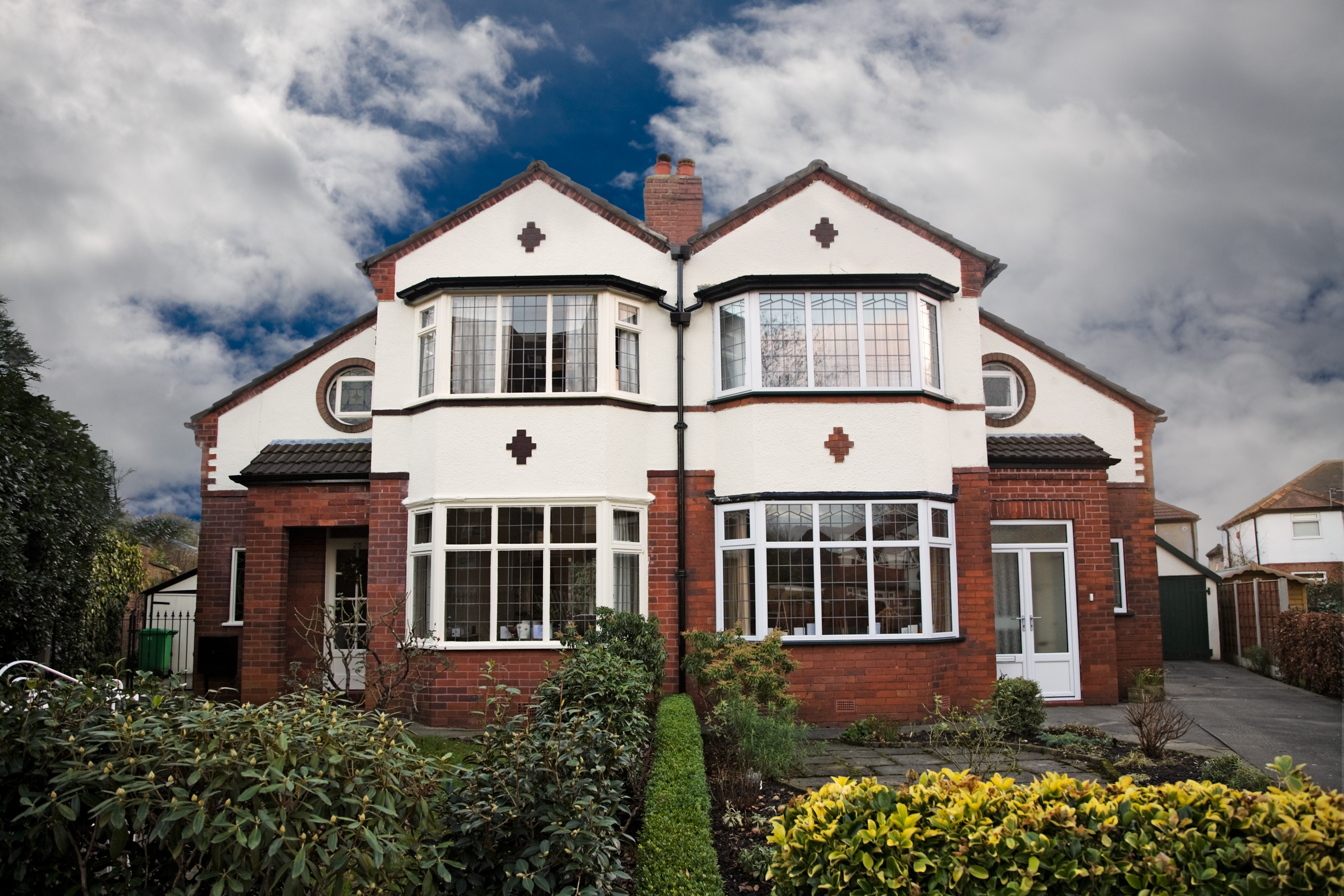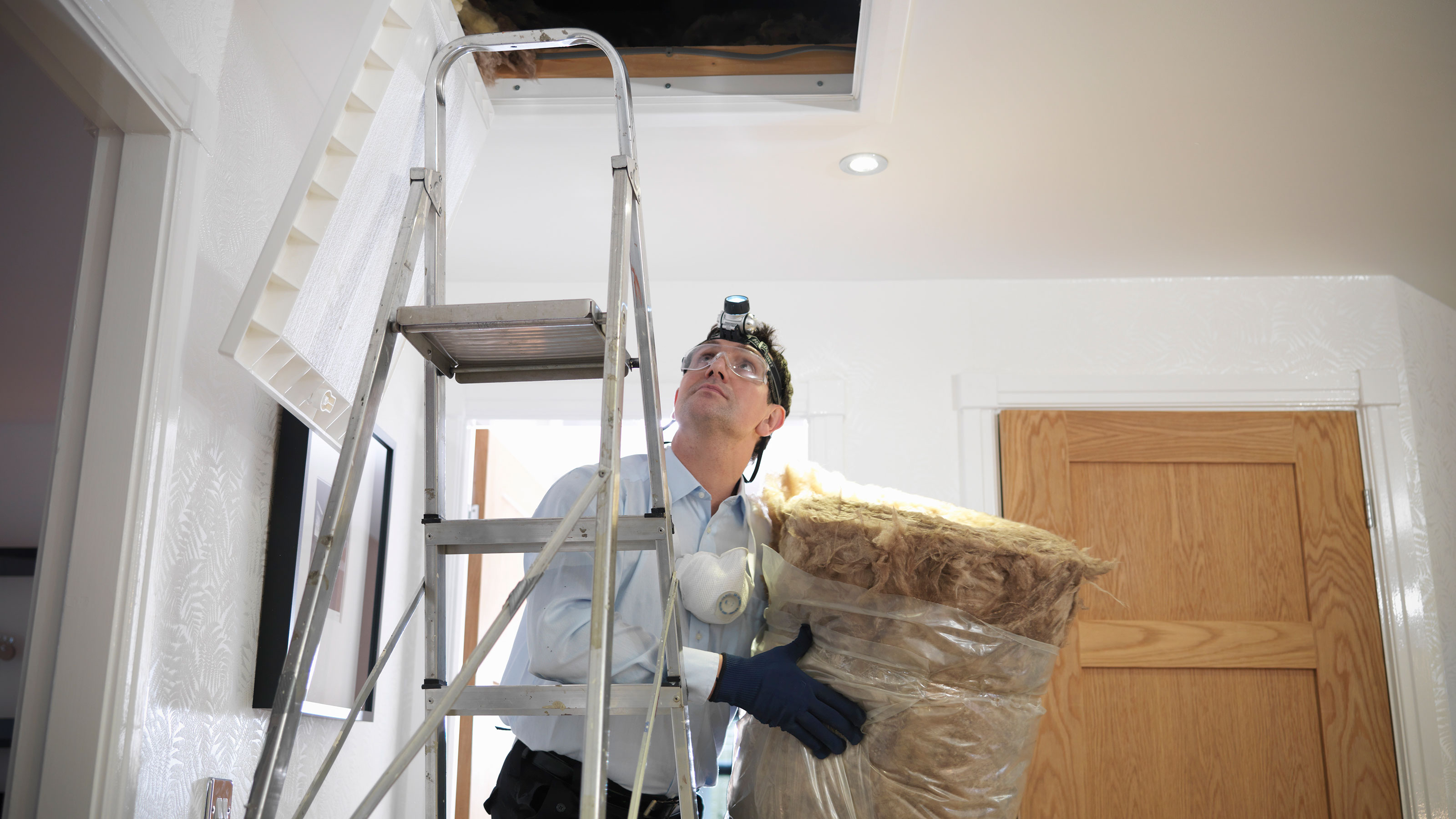How to save hundreds of pounds on energy bills in a semi-detached house
You can potentially save a fair chunk of money on your energy bills by improving your home's efficiency. Our experts explain what you can do depending on your budget size

If you are living in a semi-detached home, how best can you cut energy bills this winter by improving your home’s ability to hold heat, and even generate your own energy?
We asked a panel of experts how they would reduce heating bills for a typical early 20th century semi-detached house with a gas boiler: Paul Ciniglio, refurbishment lead with the National Energy Foundation; David Hilton, an expert in sustainable buildings and energy efficiency; and architect Paul Testa, who has carried out extensive energy efficiency improvements in his own home.
“The overall approach with this type of house is first, to use insulation then to address airtightness (chimney, draughtproofing, replacing rotten windows) and finally, to look at the heating controls,” says David Hilton.
“You also need to make sure that any remedial action is compatible with the building, so the materials you use need to be breathable.”
How can I save money with a £200 budget?
For £200, the first task, say all three experts, is to insulate the loft (you’ll need to more than double this budget if you’re paying for professional installers). For some handy advice see our guide on how to insulate a loft.
“Loft insulation is generally the easiest type of insulation to deal with, and one of the measures that makes the most difference in terms of warmth, comfort, energy bill savings and reducing carbon emissions,” says Paul Ciniglio.
Adds David Hilton: “The first thing to do is to go to a builders’ merchant to buy loft insulation and to roll it out yourself. If you already have insulation in the loft, take a look and see if the insulation is compacted. If it is, add more to make sure the insulation is still efficient, and covering all areas.
“And if you’re using mineral wool insulation don’t block all the air going into the loft, as you don’t want to suffocate the space. If in doubt, get advice.”
Expect to save £255 a year after insulating an uninsulated loft (based on April 2022 fuel prices), in a semi-detached home.
Draught proofing is next on the list. David Hilton explains: “Look at door seals and window seals to check there are no draughts. If there are, put in draught excluders, seals and draught proofing tape.”
Do this and you’ll save around £45 a year after draught proofing around windows and doors for a gas fuelled semi-detached home, or £65 a year if there’s an open chimney that’s also been draught proofed with a chimney balloon or chimney sheep.

How can I save energy with a £2,000 budget?
As well as paying for all of the above, £2,000 will also allow you to replace some rotten or underperforming doors or windows. “Go for A rating or higher for double glazed windows; in terms of saving energy the material the frame is made of is less important,” says Paul Ciniglio.
“You could choose triple glazed windows if you have acoustic issues, although some of the double glazing windows available are really good now.”
Adds David Hilton: “Ensure the windows are installed by a FENSA-approved supplier and choose the door or window that’s in keeping with the architectural style of your home.
Next, he suggests: “Think about adding thicker carpets and membrane on the floor, to stop draughts coming through the floorboards; a good underlay would also help.”
Temperature control is also important, says David Hilton. “Take out your TRVs (thermostatic radiator valves),” he says. “Instead install motorised radiator valves (ours cost £600 for seven radiators) so you can set each radiator at an exact temperature — they are much more accurate and controllable.
“There’s a 10-year payback on heating bills but it’s also about convenience and lifestyle as you know exactly what the temperature is in each room.”

What energy improvements can I make with £20,000?
For a budget of £20,000, David suggests doing all the tasks listed above, then lifting the floor and insulating there, replacing all the windows, if required, and installing wall insulation.
“You could go for internal wall insulation or external wall insulation at the side and back of your house — and the front, if your neighbours want to carry out external wall insulation at the same time,” says David Hilton. “If you do carry out wall insulation, be very careful not to trap moisture in the walls.”
Allow for a budget of £5,000 for underfloor insulation and £10,000 for external wall insulation (around 50 per cent less for insulating a wall internally).
Before you embark on external or internal wall insulation, check whether your home has cavity walls — many homes built after 1920 were constructed with two layers of walls and a hollow centre rather than a single brick layer.
If your home has a cavity of more than 50mm, opt to insulate the cavity walls instead, says Paul Testa. Expect to pay around £1,200 for cavity wall insulation for a semi-detached home and you’ll see savings of £285 per year on your heating bill (based on fuel prices at April 2022).
What improvements can you make with over £20,000?
With a budget of more than £20,000, on top of the measures listed above, it’s also worth considering installing an air source heat pump, especially if your gas boiler is old, plus other technologies to generate and store your own electricity, says Paul Testa.
“Replacing your gas boiler with an air source heat pump plus solar panels and solar batteries will save lots of energy,” he says. “It also means you can disconnect your gas supply saving 20 pence or more a day in standing charges.”
When it comes to air source heat pumps, homes with gas central heating are at an advantage, as they already have radiators and pipework in place, although older types of radiators may need to be upgraded.
David Hilton estimates that, in this case, you could install an air source heat pump for as little as £7,000 and expect a 10-12 year payback depending on energy use. With the government’s Boiler Upgrade Scheme providing £5,000 towards the cost of purchase, the cost to the homeowner could be as little as £2,000, he says.
“An air source heat pump currently costs the same to run as a gas boiler but gas prices will probably rise in price quicker than electricity, and an air source heat pump lasts twice as long as a gas boiler,” he adds. “So this is all about futureproofing.”
If you plan to install a solar PV array, expect to pay around £6,500, with savings of up to £500 each year, based on several factors including the levels of occupancy (homes with all-day occupancy fare best) and location in the UK.
“Once you’ve done that you could then either install a battery or, for less than £500, a hot water cylinder with an electric immersion to which the solar PV generation can be automatically diverted to,” says Paul Ciniglio. “That will maximise the benefit from the energy you have created as it will pre-heat your hot water, and they are also very cost-effective.”
At these levels of investment, it’s worth seeking professional impartial advice before you start work. The National Energy Foundation (NEF) will carry out an energy efficiency assessment for around £500. “That will help you prioritise your budget and set out a phased plan that you can follow as time and budget allows,” says Paul Ciniglio.
Get the Homebuilding & Renovating Newsletter
Bring your dream home to life with expert advice, how to guides and design inspiration. Sign up for our newsletter and get two free tickets to a Homebuilding & Renovating Show near you.
Alison Wall is an experienced homes journalist, and former chief sub editor of Homebuilding & Renovating. She has interviewed countless self-builders and renovators regarding their projects, and has a special interest in eco builds. She is also renovating her 1970s home and garden, and has a particular interest in making her own home greener, having recently added solar panels, an EV chargepoint and a solar battery system.

